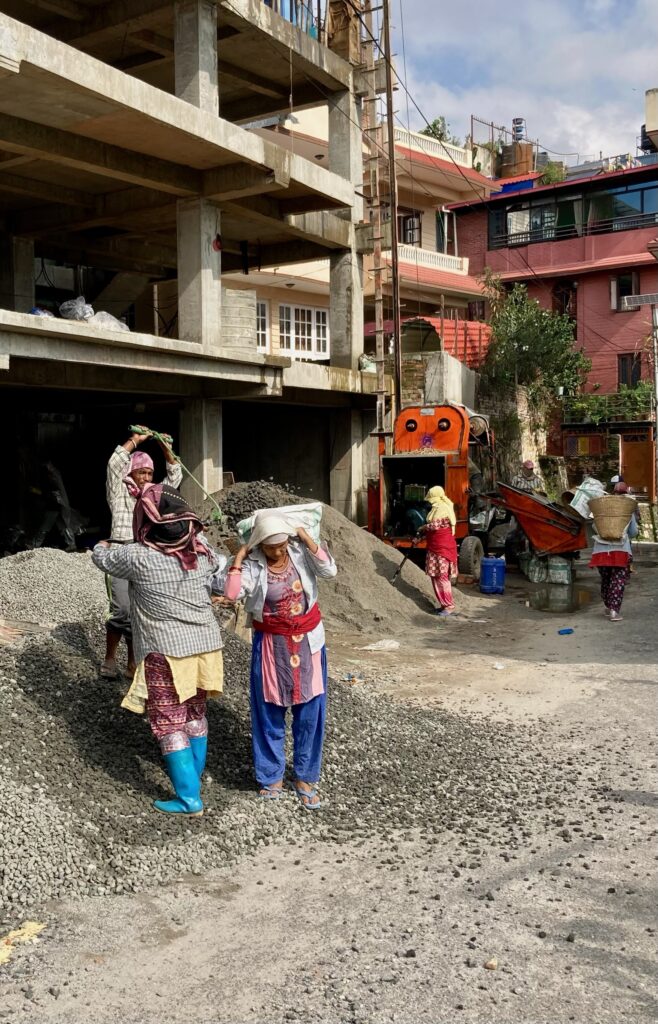Not much happened this week on the humanitarian front. We have a tentative itinerary of our trip next week to Rautahat to visit a project that supplied schools with furniture. It will be Wednesday traveling there, stay the night, tour/site-visit on Thursday, stay again that night, and come home on Friday.
On Tuesday, our branch president asked us to give talks in Church, which we did yesterday. Taunya’s assigned topic was hope, mine was the Millennium. They went well. We both had prepared adequately and had practiced singing There is Peace in Christ (2018 Youth theme song) to pre-recorded accompaniment. This song is a perfect introduction to Hope, so we sang it at the beginning of Taunya’s talk.
As part of my talk I asked the following question: What essential work will there be to do during the Millennium?
My answer was temple work — not a novel idea, by any means! Right now the relatively small number of saints who go to the temple are not able to keep up with the demand. But will that be true during the Millennium?
Let’s see. The current population of the earth is approximately 8 billion. The world population since the beginning of human history is estimated to be between 69 billion and 110 billion people.
Let’s simplify and say 100 billion more people will be needing temple ordinances performed on their behalf. If we further say we have 1000 temples, and 100 million saints working for 1000 years, the math is easy. (Let’s assume also that during the Millennium, with unimaginably powerful technology (i.e., the gifts and power of God), family history research will be so fruitful that the human family tree will be fully filled out in plenty of time.)
100 billion people needing ordinances would only require each saint being proxy for one person per year! And you could serve as proxy for those 1000 persons, each one in a different temple! (Actually, we don’t know how many spirits still need to come to earth, gain bodies and receive gospel ordinances, so these numbers could be way off.)
Due to lack of time I omitted an analysis of all the logistics from my talk, but the question occurred to Taunya (and others): How will all this temple work be scheduled — if it all needs to happen during the Millennium, which though a long time, is still “just” 10 centuries?
To restate the envisioned division of labor and how it relies on several simplifying assumptions:
- 1000 temples (assuming they get built fast and early on);
- 1000 years (could be more or less by a few);
- 100 million saints (recommended and ready to serve as patrons — this number will certainly fluctuate and presumably steadily increase over time); and
- 100 billion persons needing individual ordinances (family sealings are another matter).
So, 100 thousand saints per temple per year means each temple must accommodate 100 thousand ordinance-sets in a year’s time. Assuming a 50-week year and a 5-day week, that’s 100,000 / (50*5) = 400 ordinance-sets per day. Assume 2 hours per ordinance-set-performing-session and a 20-hour day (!), that’s 10 session blocks per day. Each session would need to accommodate 400/10 = 40 patrons. That is doable even by today’s standards.
Resurrected bodies won’t get tired so the work can proceed steadily without need for breaks. This labor of love will be unimpeded by any earthly (or any kind of) opposition, for it is the very work and glory of God, and Christ who will reign supreme over all the earth. Simply glorious to contemplate so great a cause!
Photo credits to Taunya, our fearless photojournalist!









Hindu women in Nepal observe an annual public holiday to celebrate the festival of Hartalika Teej, in commemoration of the “marriage of the god Shiva to the Hindu goddess Hartalika”. The “Teej” part of the name is from a word referring to the red teej bug, which is why wearing and display of the color red is customary on this day.

Leave a Reply